Provence-Alpes-Côte d’Azur: Part I – Orange and Vaison-la-Romaine
Posted on May 15,2018 By John Compisi

It can be difficult to imagine an area of the world with more varied terrain, climate and history than Provençal, the classic spelling of Provence. Even the name Provence is indicative of its history, derived from Provincia Romana, given by the Romans when they established the region as the first Roman province beyond the Alps. Bordered in the northeast by the Alps, the East by the Italian Piedmont, the Southeast by Liguria, the South by the Mediterranean and the West by Languedoc-Roussillon, the most prominent and influential feature, perhaps, is the Rhône River which finds its source in the Swiss Alps at the Rhône Glacier and flows through Switzerland to France and ultimately empties into the Mediterranean. The terroir of Provence; the soil, topography and the climate and perhaps the history are created and dictated by the influence of the Rhône.
 The Rhône leaving Lake Léman in Geneva heading to Provence (L.Compisi)
The Rhône leaving Lake Léman in Geneva heading to Provence (L.Compisi)
We first saw the Rhône in Geneva at the beginning of our journey where it flows into and then out of Lake Léman (Lake Geneva). After leaving Switzerland and entering Italy we did not see the Rhone again until we were driving past Valence on our way to the small city of Bollène. Bollène is located in Provence-Alpes-Côte d’Azur where we stayed for three days as we began our exploration of Provence. We were fortunate to stay in the guest cottages of vignerons Valérie and Jean-Pierre Jourdan, proprietors of Domaine Bastide de Jourdan. The Domaine was perfectly situated for our upcoming explorations of Avignon, Châteauneuf-du-Pape, Orange and the Roman City of Vaison-la-Romaine. Yes, the Domaine’s wine was also quite good and representative of the region.
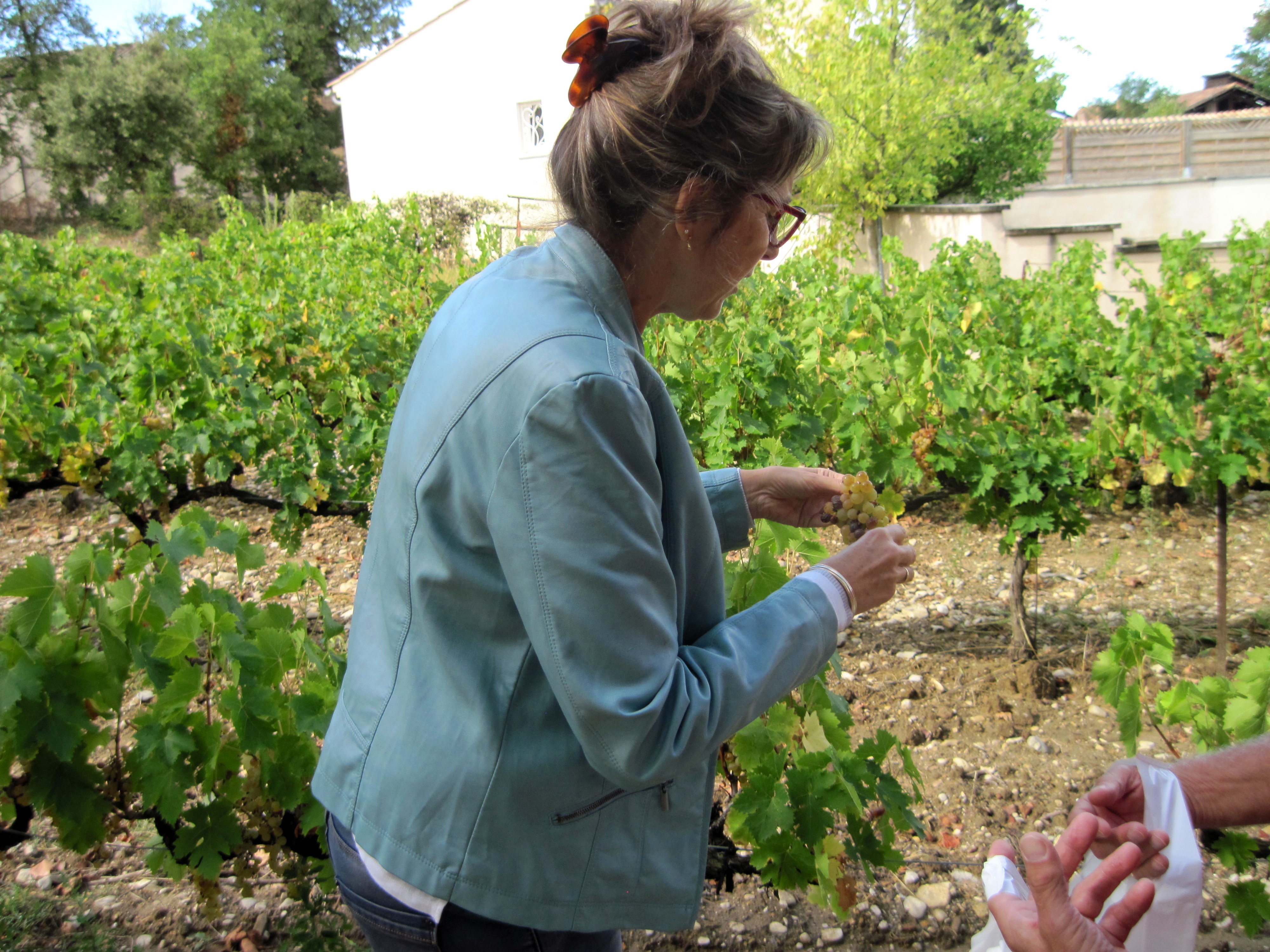 Mme Valérie Jourdan of Bastide Jourdan in Bollène (L.Compisi)
Mme Valérie Jourdan of Bastide Jourdan in Bollène (L.Compisi)
 Family Jourdan- Jean-Pierre, Valérie and Grandpa enjoying harvest (L.Compisi)
Family Jourdan- Jean-Pierre, Valérie and Grandpa enjoying harvest (L.Compisi)
We explored Orange (Arausio, the original Roman name when founded in 35 BC) on our first day enjoying the delightful Market which consumed several blocks in the center of the city. The local food, vegetables, spices and crafts were eye-catchingly colorful.
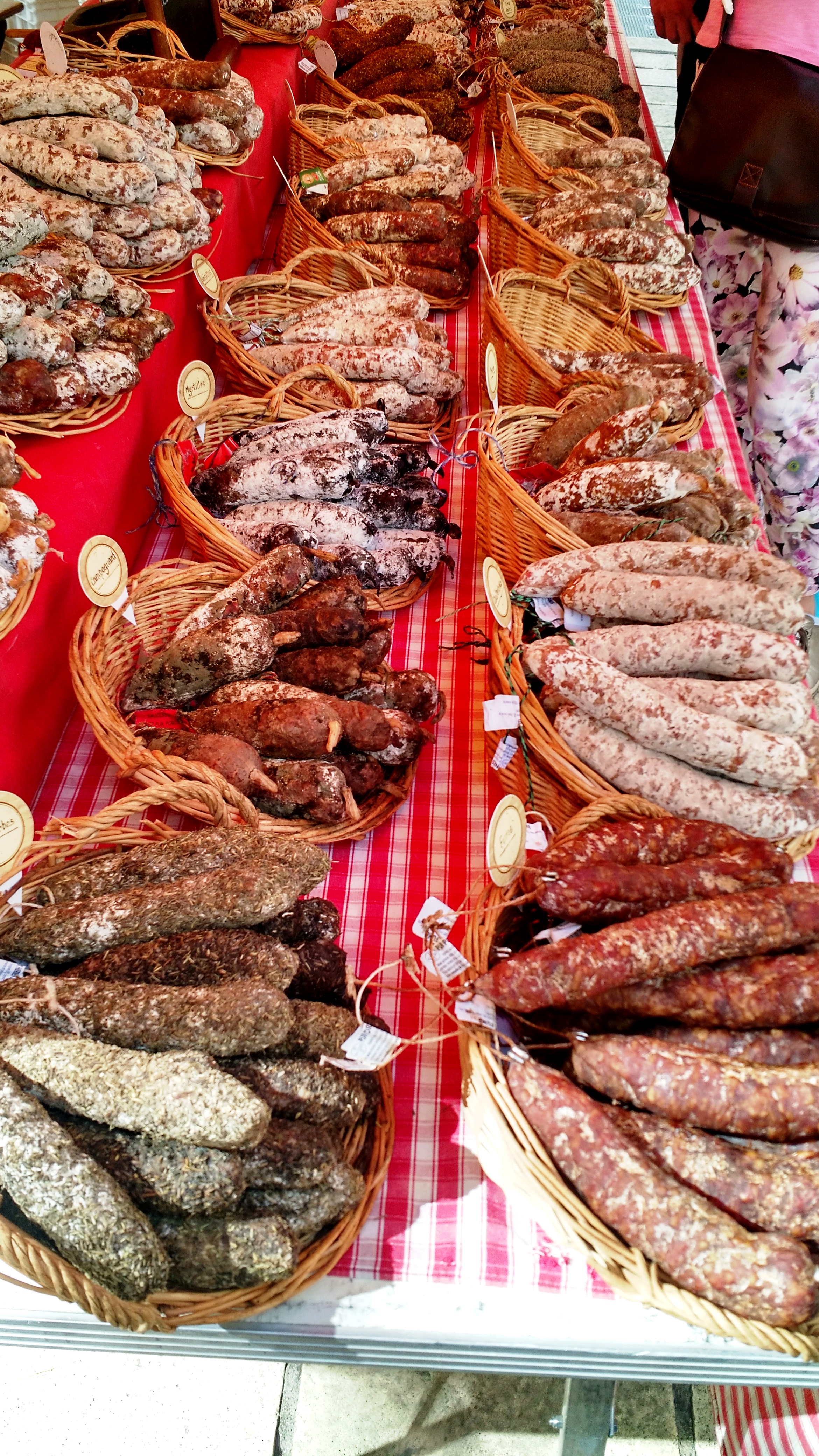 Charcuterie at the market in Orange (L.Compisi)
Charcuterie at the market in Orange (L.Compisi)
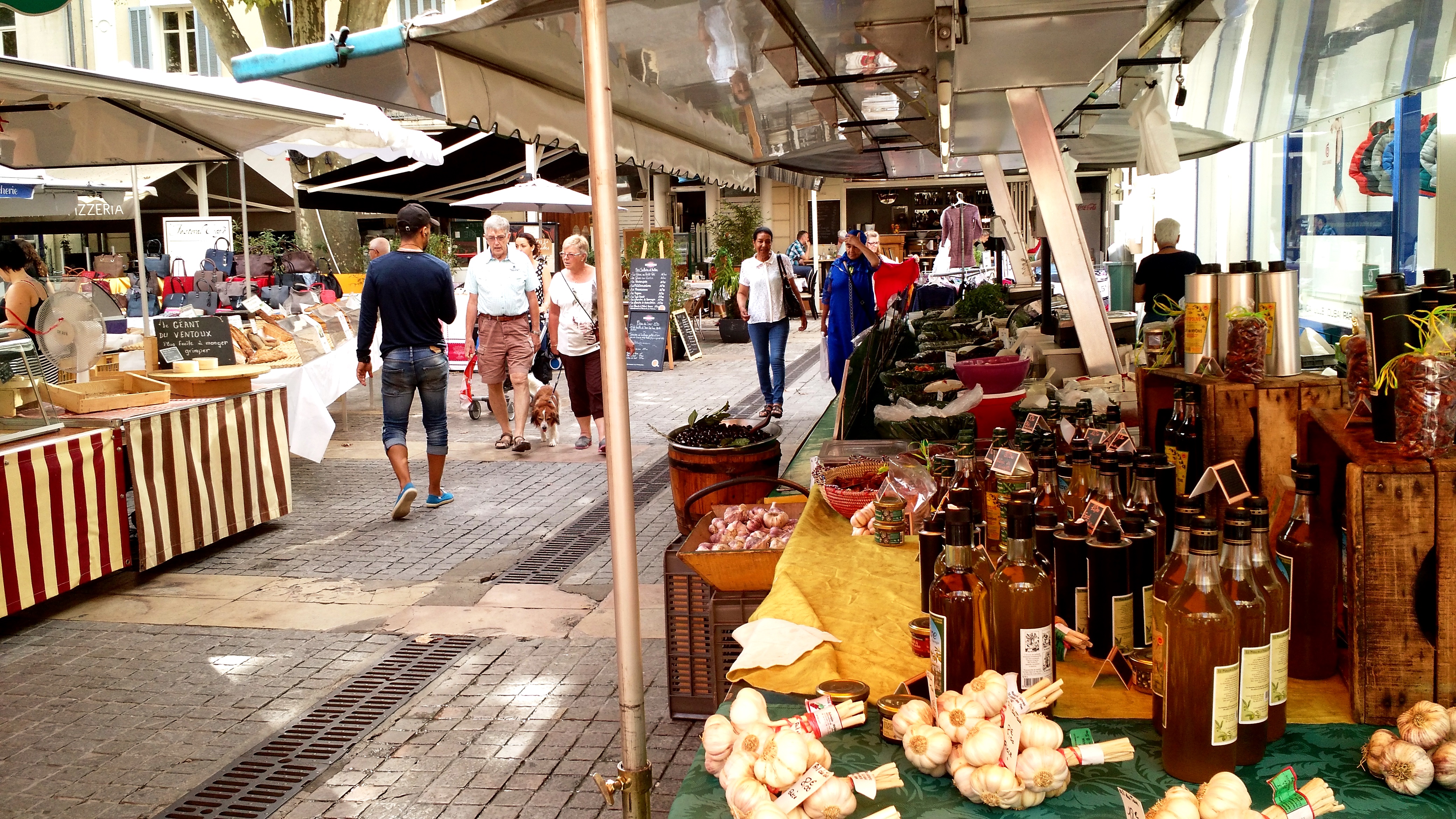 Delightful local food, herbs and craftsat the market in Orange (L.Compisi)
Delightful local food, herbs and craftsat the market in Orange (L.Compisi)
The principal historic sites, the Triumphal Arch of Orange and the Roman Theatre, both UNESCO World Heritage Sites, are two must-sees. Théâtre antique d’Orange, the Roman Theatre of Orange was built in the first Century AD. The preservation of this theater, constructed during the reign of Caesar Augustus, is phenomenal and the efforts to make a living museum have vastly succeeded. The size is difficult to comprehend but consider that it could seat between 5,400 and 7,300 people. The theater is also the home of the summer opera festival, the Chorégies d’Orange.
 The Triumphal Arch of Orange (L.Compisi)
The Triumphal Arch of Orange (L.Compisi)
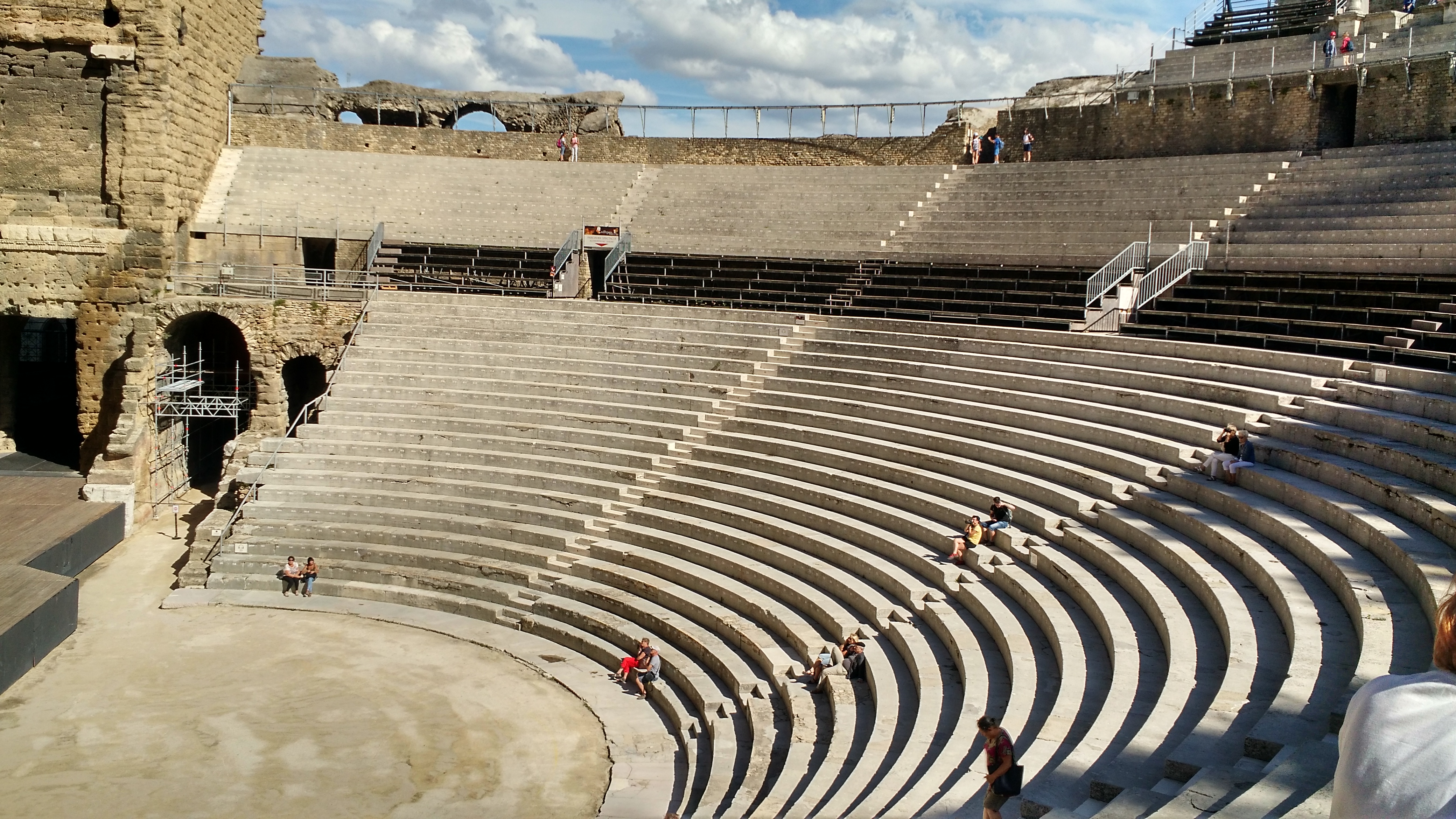 Théâtre antique d’Orange (L.Compisi)
Théâtre antique d’Orange (L.Compisi)
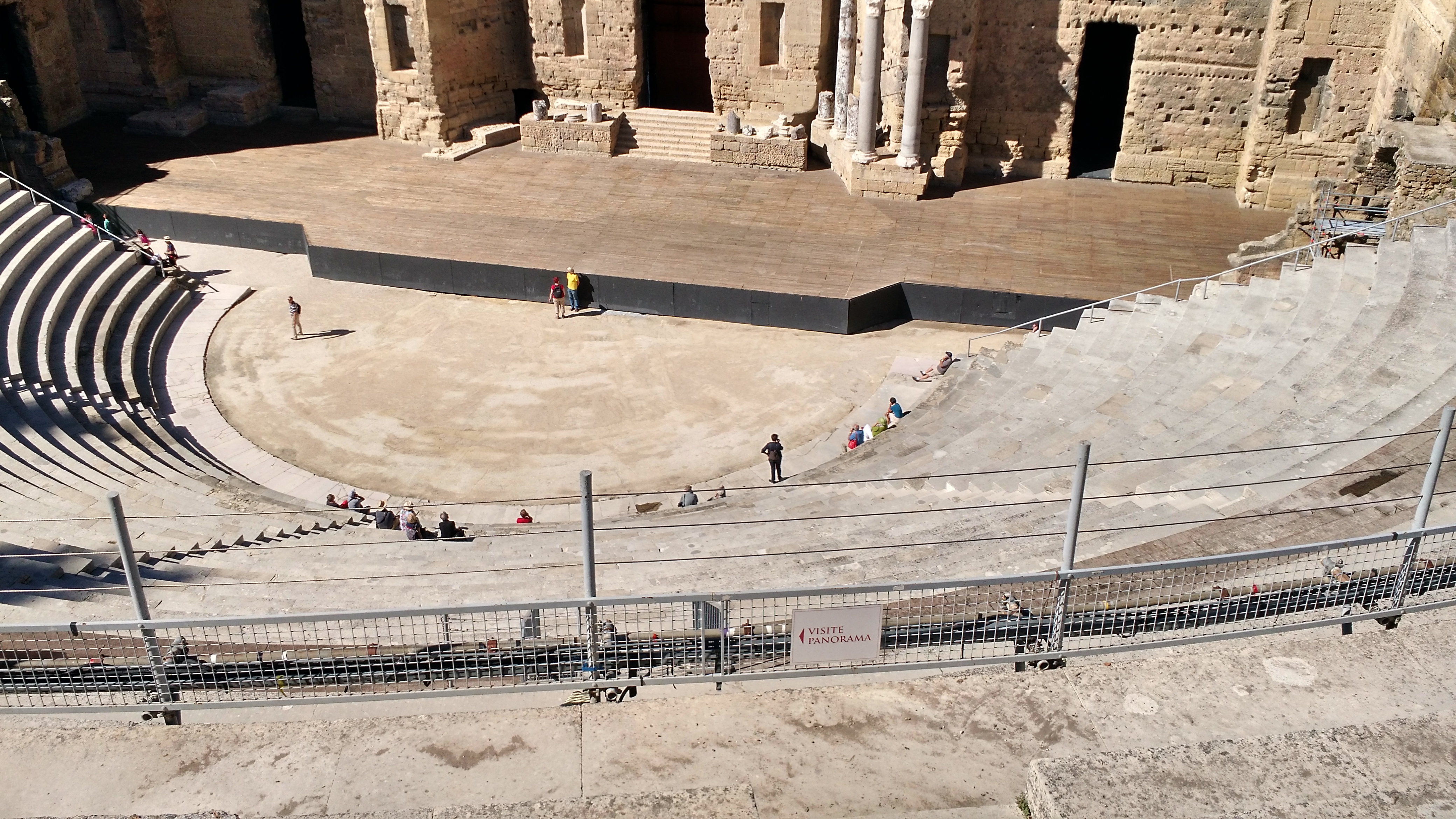 Théâtre antique d’Orange stage from the highest seats (L.Compisi)
Théâtre antique d’Orange stage from the highest seats (L.Compisi)
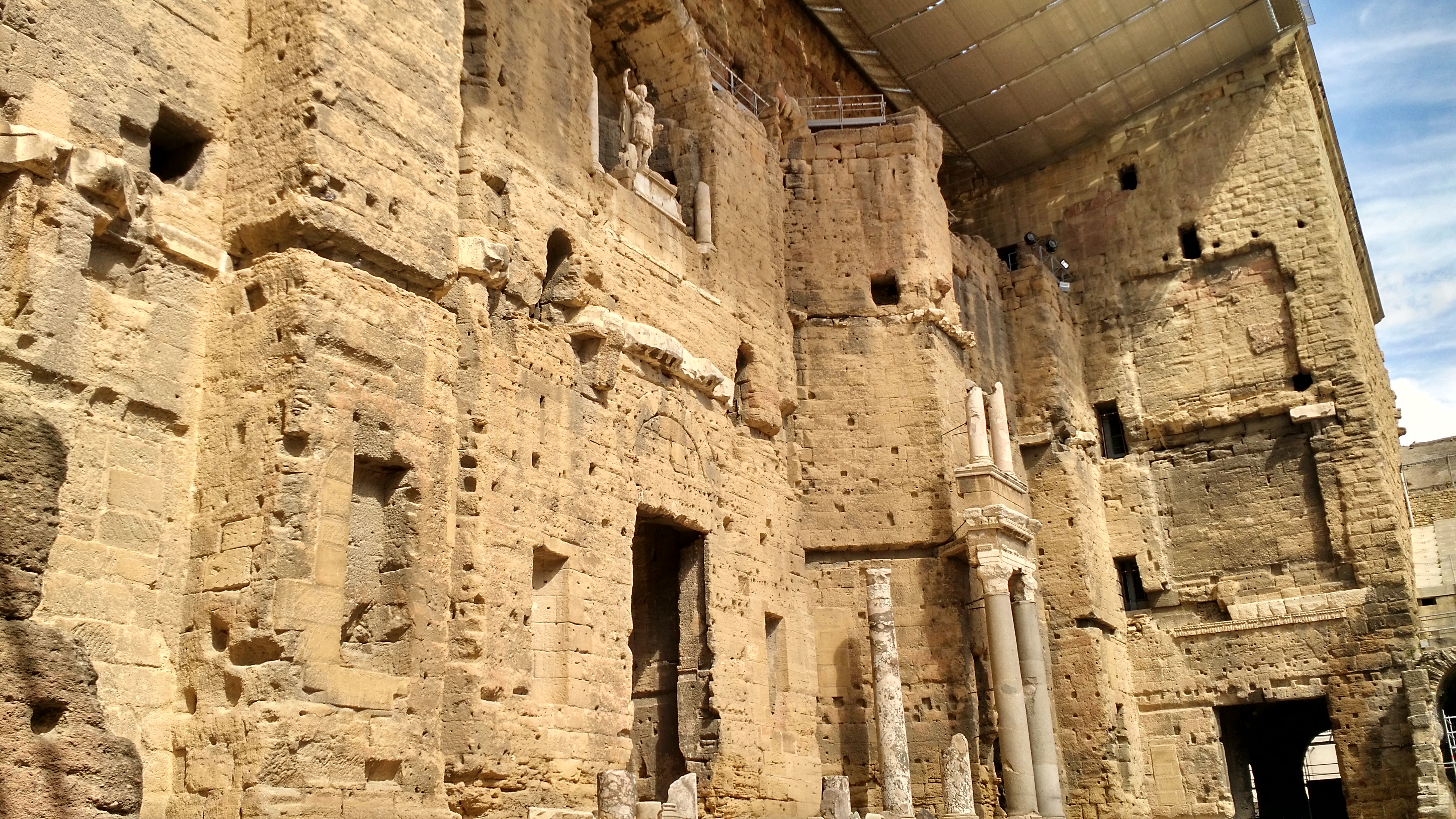 Detail of the amazing stage – Théâtre antique d’Orange (L.Compisi)
Detail of the amazing stage – Théâtre antique d’Orange (L.Compisi)
Not to far from Orange is the historic town of Vaison-la-Romaine. Visitors can walk through the original Roman hill town of Vaso which remains the heart of modern day Vaison-la-Romaine. You are literally walking on cobblestones placed over 2,000 years ago. Most notable is the old Roman Bridge, over the river Ouvèze, constructed in the first century AD and still in use by people and automobiles. I had a feeling of my own insignificance as I considered the people who had crossed that bridge before me and the interesting and difficult lives they must have lead.
 The old Roman Bridge in Vaison-la-Romaine (L.Compisi)
The old Roman Bridge in Vaison-la-Romaine (L.Compisi)
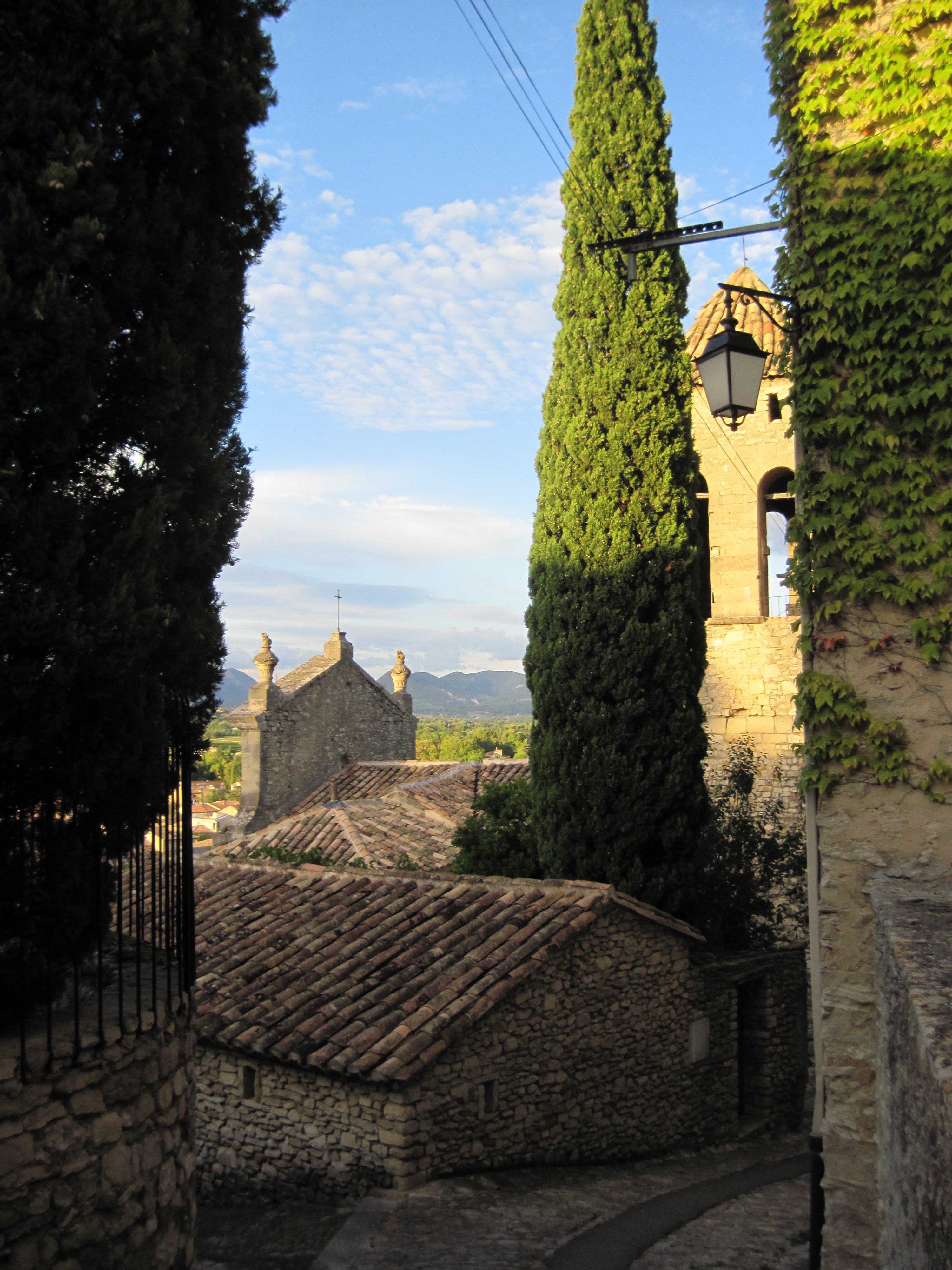 View of the countryside from the original Roman hill town of Vaso(L.Compisi)
View of the countryside from the original Roman hill town of Vaso(L.Compisi)
Some places to eat near Bollène and Orange:
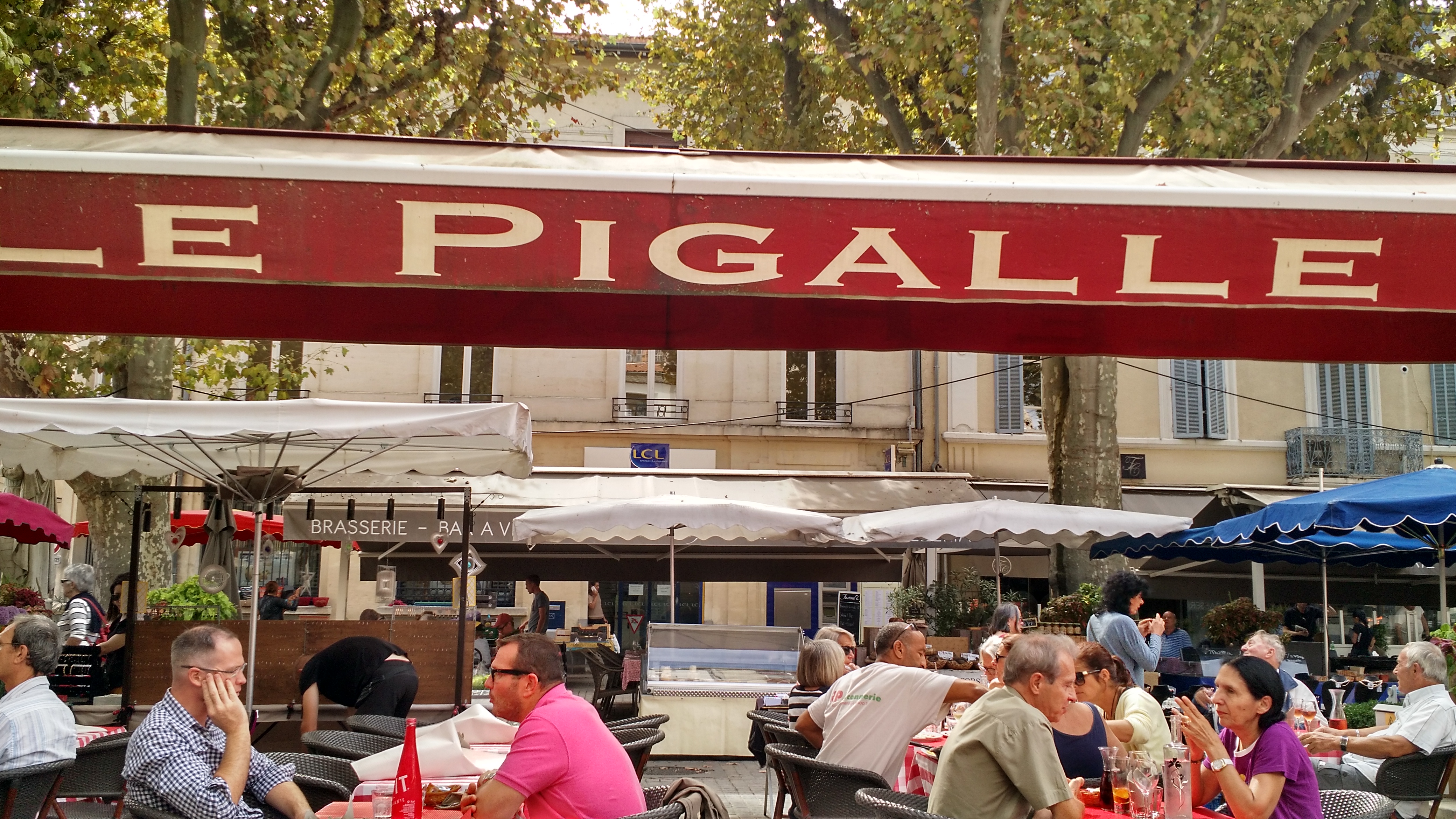 Lee Pigalle in Orange for lunch (L.Compisi)
Lee Pigalle in Orange for lunch (L.Compisi)
Le Pigalle in Orange had outdoor and indoor seating and a very diverse menu for or lunch experience. We enjoyed the local wines and food made with very fresh ingredients.
 Sign leading to Restaurant La Chapelle Saint Paul Trois Châteaux (L.Compisi)
Sign leading to Restaurant La Chapelle Saint Paul Trois Châteaux (L.Compisi)
Restaurant La Chapelle Paul Trois Châteaux is located at Saint 5 Impasse Ludovic-de-Bimard, 26130 Saint-Paul-Trois-Châteaux. Recommended by Mme Jourdan, the setting is romantic and intimately delightful. The dishes were very thoughtfully prepared and exquisite in flavor.
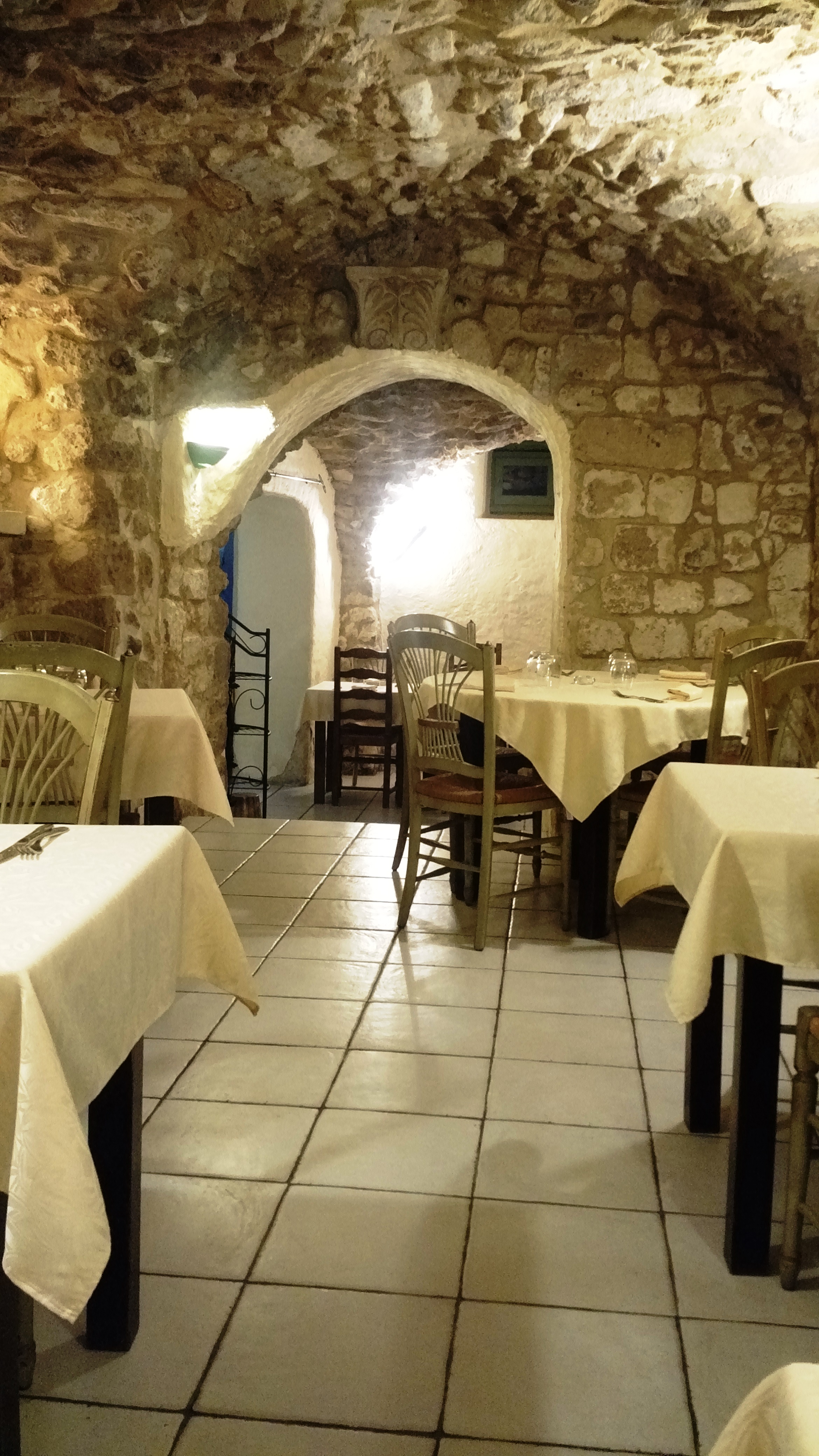 The dining room at Restaurant La Chapelle Saint Paul Trois Châteaux (L.Compisi)
The dining room at Restaurant La Chapelle Saint Paul Trois Châteaux (L.Compisi)
Where we stayed: We were very fortunate to stay at the quaint and convenient cottages of Bastide Jourdan at the winery property in Bollène were we awoke to the sounds of harvest. A delightful and well situated location, especially in September. The cottages (there are several) offer full kitchens and 2 bedrooms.
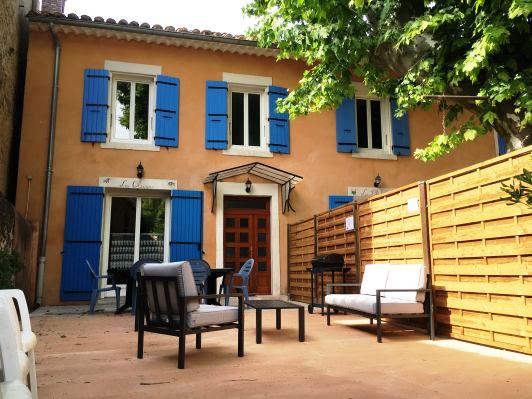 One of the cottages at Bastide Jourdan (L.Compisi)
One of the cottages at Bastide Jourdan (L.Compisi)
Our first visit, chronicled here, was so pleasant and relaxed that we will be returning in July to experience the annual Lavender bloom which should be spectacular. Read Part II about Châteauneuf-du-Pape and Part III on our report on Avignon!
What a great area! Brings me back to our stay there in 2018. Nice write up
Thanks Julie. What a great time we had with you two in Provence!! J&L